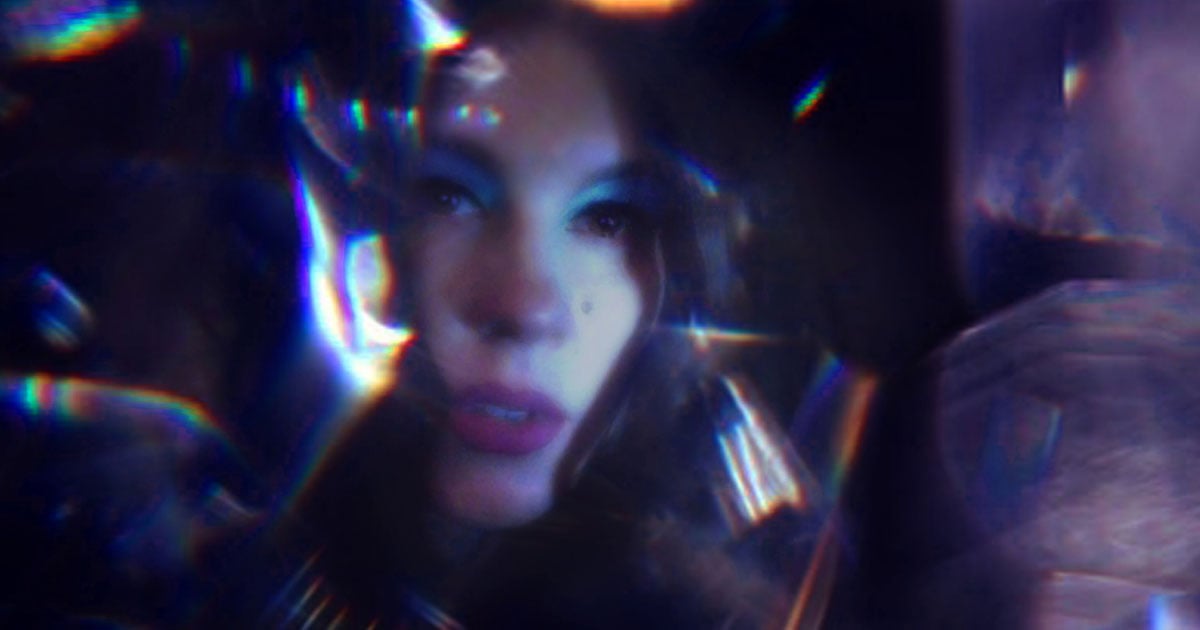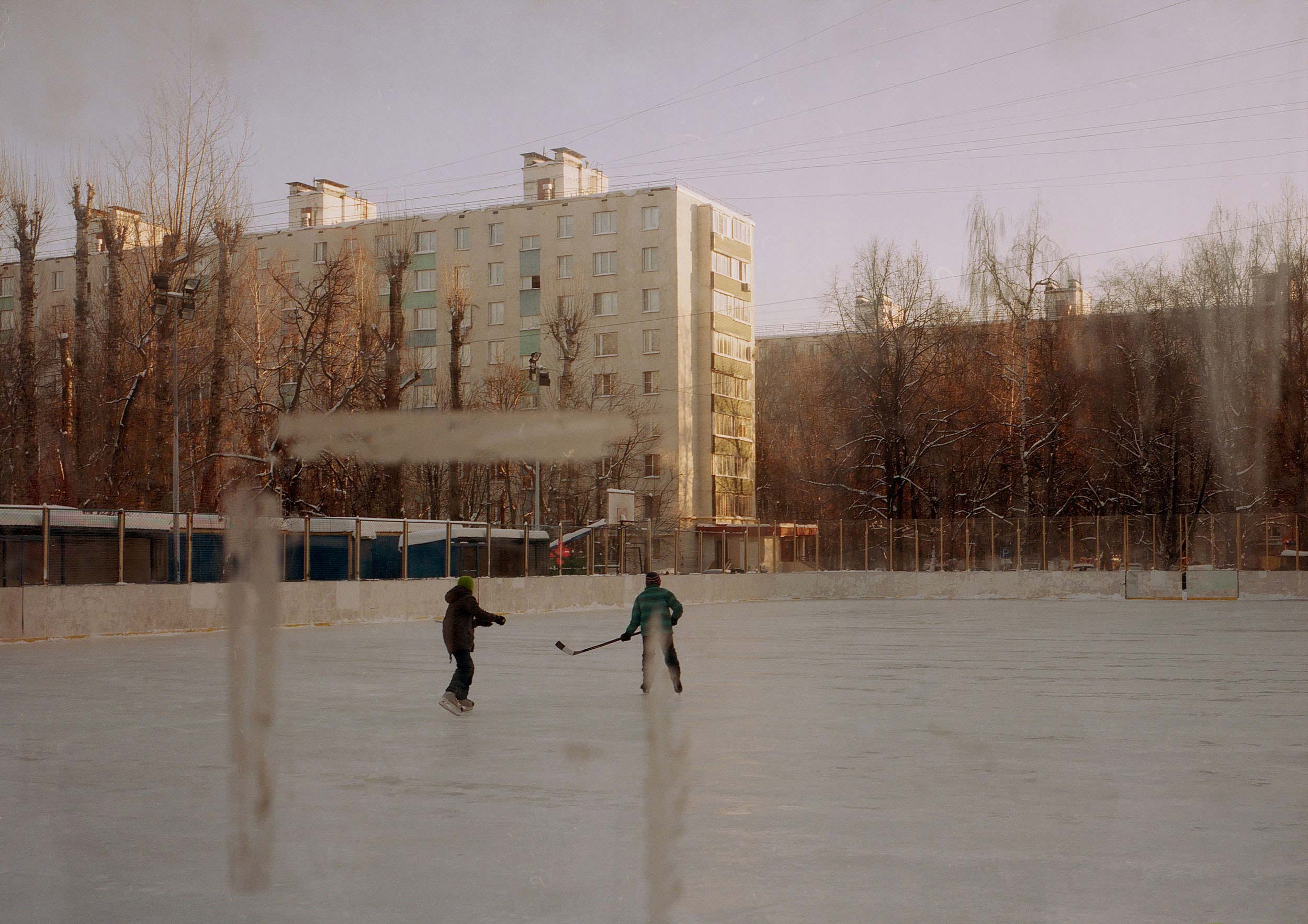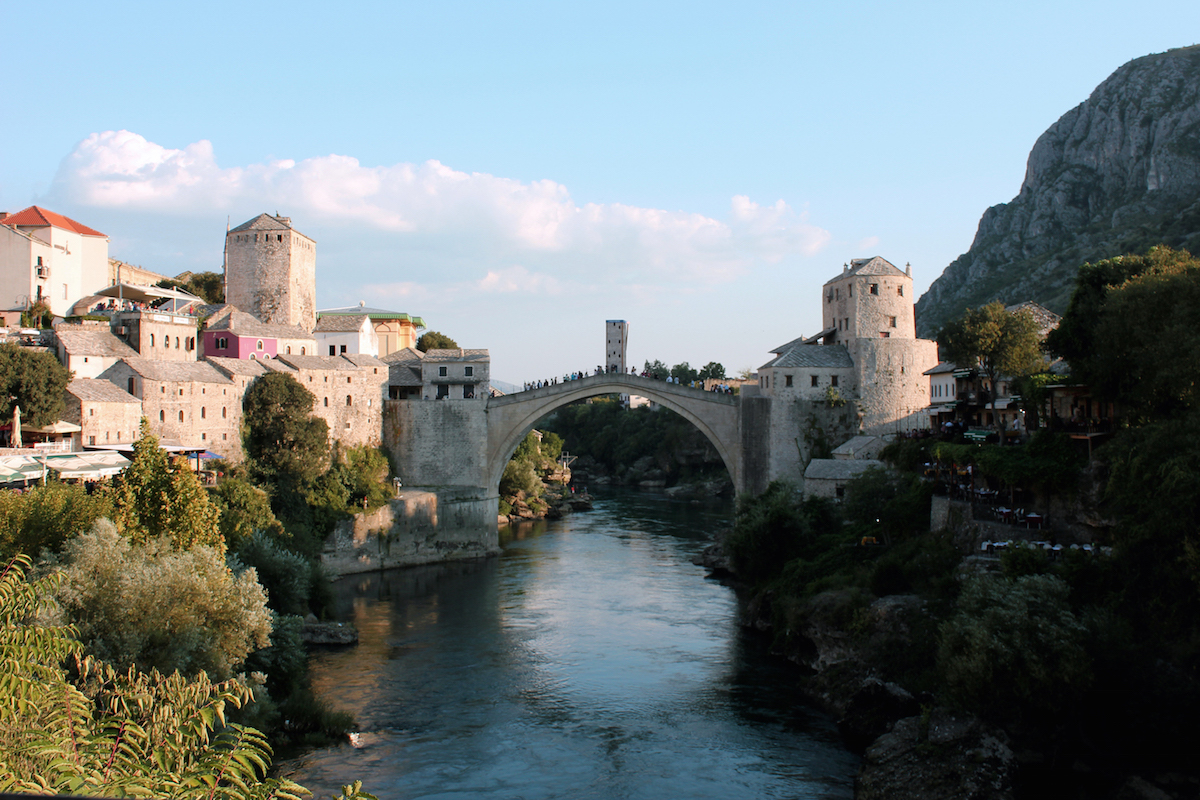A sunny Bosnian comedy unpacks the discomforts of homecoming
At the centre of Bosnian-Dutch director Ena Sendijarević’s feature debut Take Me Somewhere Nice is perpetually aloof Alma. Adrift in a country her parents left in the 90s, she is forced to grow a little braver to reconnect with her roots.
For those of us who grew up in the West after our parents left Yugoslavia in the 1990s, the relationships we have with the countries of our roots — whether that area is now Bosnia, Croatia, Kosovo, Slovenia, or Serbia — is complicated to say the least. But so too is our relationship to the countries we’ve grown up in. The emigre, “third-culture kid” experience is often one of confusion and displacement, of a strange kind of melancholy, of being neither from here nor there.
Ena Sendijarević’s Take Me Somewhere Nice, now available to stream on Mubi, evokes this sense of displacement through the story of Alma (Sara Luna Zorić), a Dutch-Bosnian teenager who returns to Bosnia for the first time in her adult life to visit her estranged and ailing father. She’s met at the airport by her disinterested cousin, Emir (Ernad Prnjavorac), who, despite being unemployed, finds himself too busy to drive Alma to a distant provincial hospital to meet her father. Alma initially strikes up a tentative fling with Emir’s best friend Denis (Lazar Dragojević), before the three of them eventually find themselves on a road trip through Bosnia to find her parent.
Writer-director Sendijarević introduces Alma to us via a double reflection, in a changing room mirror as she tries on a dress. Throughout the film, she makes great use of the environment to suggest Alma’s dual identity, often positioning her at oblique angles within the landscape. For Sendijarević, the film is not directly autobiographical, but it is deeply personal: “I used some of the worlds that I grew up in as an arena — the world of working-class Dutch migrants and the world of the Bosnian diaspora. But the story is completely made up. It was constructed out of a desire to dive into East-West power structures and tensions, played out by three teenagers with very little power.”
That dynamic very much drives the film. Alma’s perception of Bosnia is one of both yearning and naivety. Her testy relationship with Emir exposes the latter – in one of their first conversations, she complains his car is broken (it works fine, but it’s not a smooth ride), presuming that anything falling short of Westernised efficiency needs to be fixed. Later, she accuses him of being a nationalist, which he rebuffs. It’s an accusation coloured by her Westernised worldview, where the Balkans are often unfairly reduced to a smorgasbord of ethnic squabbling and flag-waving. Yet she also acknowledges those same impulses in Dutch society, warning Denis that if he dreams of migrating, the Dutch will only see him as “another foreigner without a job”. She explains her dislike of the Netherlands in one pointed quote; “cold weather, cold people”. Her yearning for “somewhere nice” is represented by her desire to connect with Bosnia.
But the Bosnia of Take Me Somewhere Nice is a vastly changed one to the one that Alma’s mother would have left two or more decades ago. Alma’s night-time travels through Sarajevo showcases a gleaming, neon-lit metropolis, a far cry from the Sarajevo that first emerged after the Bosnian war in films like The Perfect Circle (Ademir Kenović, 1997) and Grbavica (Jasmila Žbanić, 2006), where damage was still visible after the siege. This neon-lit Sarajevo doesn’t look much different to any other major European city. Sendijarević says she “wanted to show how capitalism has found it’s way in this post-socialist world. I wanted to show the part of Sarajevo that this Western European girl feels most at home with: the consumerist part. I see a lot of diaspora coming to Bosnia in the summer and then they go shopping in the mall and they get their hair and nails done. You could criticise this, but behind it is I think a sincere desire to connect”.
Sendijarević doesn’t really give us an idea of how big Bosnia is, or how far away different locations are. Alma is pretty much lost without the presence of Emir and Denis, but unlike a tourist, she firmly believes she can find her way around without a map. “I think the relation between children of migrants and their ‘home’ country is far more troubled than we all want to admit,” says the director. That feeling is manifested in Alma’s inability to fully connect with her “home” country. One waitress at a cafe responds to Alma’s order in English, as if sensing her discomfort with the language. It’s a small moment, but a devastatingly real and semi-regular occurrence for this writer – an instant reminder that you don’t really belong here or there. This disconnected relationship follows Alma into the uglier elements of modern Bosnia, such as the lecherous, corrupt politician who tries to pick her up, or the low-level thugs who arrive during the closing scene to commit an entirely random act of violence. Alma’s Westernised privilege both shelters her from the gravity of these incidents and puts her at greater risk of them.
Of course, the realisation of Alma would not have been possible without Sara Luna Zorić, who, like her character, was born in the Netherlands to Bosnian parents. The sense of navigating those same tricky dual identities and linguistic boundaries, responding in Dutch to a mother asking questions in Bosnian, feels entirely authentic. Sendijarević sees both women as part of the same “lonely Instagram generation”, searching rootlessly for an identity. Alma dyes her hair blond in a Sarajevo shopping mall and wears a blue dress throughout the film, the colours of the Bosnian flag, perhaps an attempt to wear her roots on her sleeve.
Stylistically, this relationship with the Instagramification of identity is apparent through the film – not least in its use of a 4:3 aspect ratio, a deliberate ploy on the director’s part to mimic the 1:1 aspect ratio of Instagram images. The film’s deliberate compositions and highly-stylised images, with big dashes of colour, bring to mind a director and a protagonist finding themselves. One big influence is Jim Jarmusch’s Stranger Than Paradise, a favourite of the director’s. That film’s plot, about a young Hungarian woman visiting an American cousin and his best friend before going on a road trip, is recycled here to great effect, inverting the previous film’s dynamics. When John Lurie’s character in that film refuses to speak Hungarian, insisting on English, it suggests a complete embrace of Americanised culture and new identities. In contrast, Emir’s increasing coldness and dislike of Alma suggests a rejection of the values she stands for, for new experiences and complex questions.
Towards the end of the film, the trio find themselves at a seaside resort, where the evening entertainment stars a magician, played by prolific Bosnian actor Emir Hadžihafizbegović. During his act, he performs the old trick of sawing a woman in half on Alma, a very literal personification of her state of mind. Casting Hadžihafizbegović in this small role feels quite tongue-in-cheek; for any viewer familiar with the post-Yugoslavian cinema sphere, the actor is an ever-present figure, working across the Bosnian, Croatian, and Serbian film industries. With his hangdog expression and watery eyes, he always evokes the sight of a perpetually exhausted Bosnian man who quite frankly has had enough of whatever it is that’s bothering him.
But his presence here is more of a knowing nod and brings the film full circle, bringing a ubiquitous figure in Bosnian and ex-Yugoslav films to a film with plentiful influences from both the West and the East. So much excellent cinema from the former Yugoslavia has been routinely ignored in the wider scope of film distribution in the West unless it has a war theme to sell, as touched upon elsewhere on this site.
It’s edifying and reassuring to see that there is possibly a new generation — those of us who, for better or worse, have grown up in Yugoslavia’s shadow — bringing a new vision of the region to the screen, one that isn’t necessarily rooted in dysfunction, trauma, or violence, but equally one that doesn’t ignore it either. It’s a version that embraces complexity without shying away from its uglier truths. For those approaching the region as “returnees”, growing up with both our parents’ culture and that our host country’s, the risk is often that those simplified images of trauma and violence will take over, inadvertently reproducing the same narratives that have calcified in the decades since. Addressing the region from a third-culture perspective requires addressing those same complex layers of meanings without giving way completely to either the Western point-of-view or the Eastern point-of-view.
Watch Take Me Somewhere Nice on Mubi for the next month.


